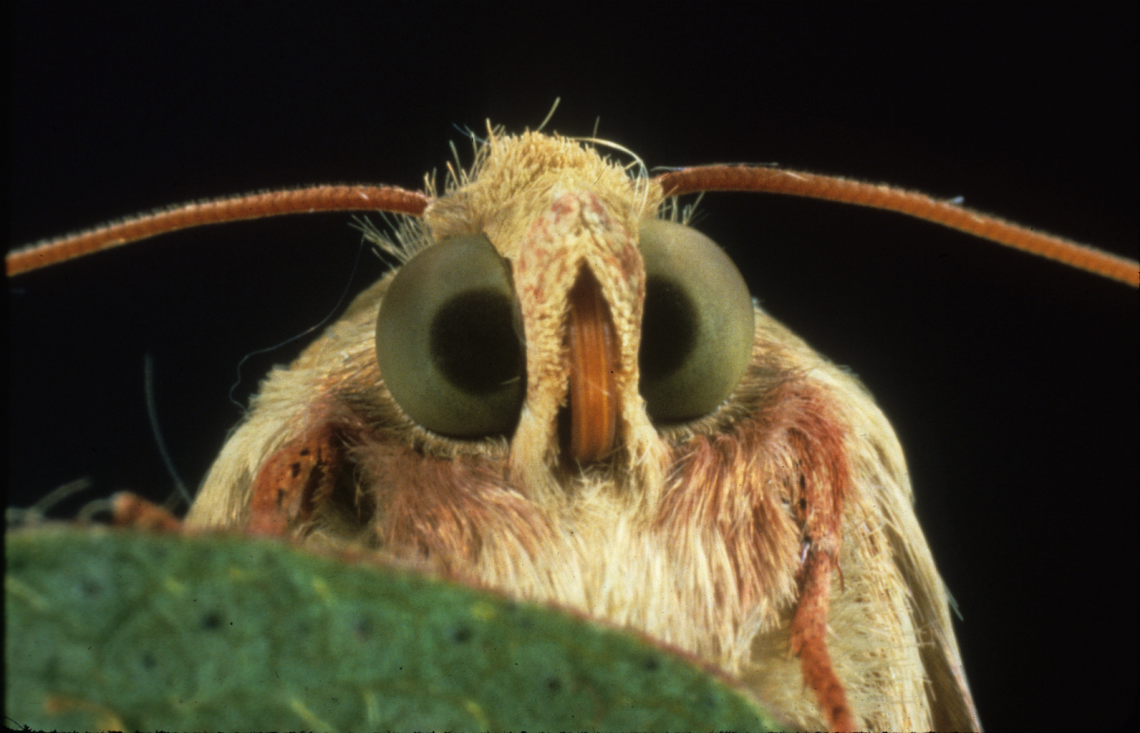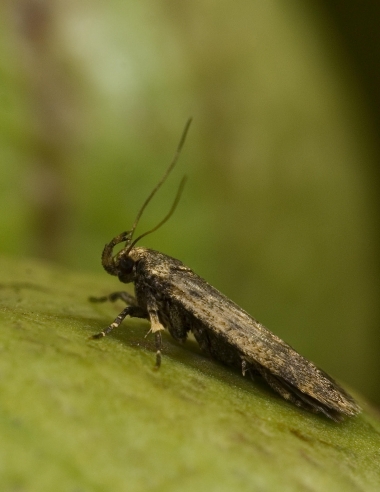Arizona, USA
December 21, 2020
A collaboration between UArizona, cotton growers, and government and industry partners eradicated the pink bollworm – one of the world's most damaging crop pests – from the United States and Mexico.

Collaboration between the University of Arizona, cotton farmers, and their partners in government and industry eradicated the pink bollworm (moth depicted above), a devastating lepidopteran pest of cotton that invaded the United States a century ago. USDA Agricultural Research Service
For much of the past century, the invasive pink bollworm wreaked havoc in the southwestern United States and northern Mexico — inflicting tens of millions of dollars in damage annually to cotton on both sides of the border.
A multifaceted strategy combining genetically engineered cotton with classical pest control tactics eradicated the pink bollworm from cotton-producing areas of the continental U.S. and Mexico, according to a new study published in Proceedings of the National Academy of Sciences.

Pink bollworm moth on a cotton boll. - Alexander Yelich/University of Arizona
"Although pink bollworm remains a daunting pest in over 100 countries, our strategic coalition rid the U.S. and Mexico of this invasive insect," said lead study author Bruce Tabashnik, a Regents Professor in the University of Arizona Department of Entomology.
"By analyzing computer simulations and 21 years of field data from Arizona, we discovered that genetically engineered cotton and the release of billions of sterile pink bollworm moths acted synergistically to suppress this pest," said Jeffrey Fabrick, a co-author of the study and a research entomologist with the U.S. Department of Agriculture's Agricultural Research Service.
According to the study, the eradication program saved U.S. cotton growers $192 million from 2014 to 2019. Through environmentally friendly approaches, it also helped to reduce insecticides sprayed against all cotton pests by 82% and prevented the application of over a million pounds of insecticides per year in Arizona.
A Long Road to Suppression
Native to Australasia – a region that comprises Australia, New Zealand and some neighboring islands – the pink bollworm is one of the world's most invasive insects. After female moths lay their eggs on cotton plants, the caterpillars hatch, bore into cotton bolls and devour the seeds within. Their feasting disrupts production of cotton lint.

A pink bollworm caterpillar, measuring about half an inch long, emerges after
devouring the seeds inside a cotton boll. - Alexander Yelich/University of Arizona
This voracious pest was first detected in the U.S. in 1917. Using field data from 1969, the new study estimates that over 200 billion pink bollworm caterpillars infested cotton fields in Arizona that year. In 1990, the pest cost Arizona cotton growers $32 million in damages, despite $16 million invested in insecticides to control it.
The tide began to turn in 1996, with the introduction of cotton genetically engineered to produce proteins from the bacterium Bacillus thuringiensis. The proteins in Bt cotton kill pink bollworm and other caterpillar pests but are harmless to people and most beneficial insects.
Although Bt cotton kills essentially 100% of susceptible pink bollworm caterpillars, the pest rapidly evolved resistance to Bt proteins in laboratory experiments at the University of Arizona and in Bt cotton fields in India.
To delay pest resistance, UArizona scientists worked with farmers to develop and implement a strategy of planting non-Bt cotton refuges to allow survival of susceptible insects. Tabashnik's team also determined the mutations that cause resistance in the lab and used DNA screening to monitor for those adaptations in the field.
Within 10 years, the use of Bt cotton reduced pink bollworm populations by 90%. For the first time since the pest's arrival, eradication seemed within grasp.
'Everything but the Kitchen Sink'
"In contrast with the rapid evolution of pest resistance to genetically engineered crops elsewhere, Bt cotton was suppressing this pest in Arizona for a decade," Tabashnik explained. "We said, 'Let's take this a step further. Let's throw everything but the kitchen sink at it and get rid of it. If not forever, for as long as we can sustain it.'"

As part of the program that eradicated the invasive pink bollworm from the U.S. and Mexico, the caterpillars of the devastating cotton pest were mass reared, and 11 billion sterile moths were released by airplanes. - Alexander Yelich/University of Arizona
In a concerted, binational effort, University of Arizona Cooperative Extension and research scientists joined forces with cotton growers, the biotech industry and government partners to devise the first program of its kind to eradicate the invasive pest.
In addition to traditional pest control tactics, such as plowing cotton fields after harvest to reduce the pest's overwintering survival, a novel strategy largely replacing refuges of non-Bt cotton with mass releases of sterile pink bollworm moths was initiated in Arizona in 2006.
The sterile moths were released from airplanes by the billions to overwhelm field populations of the pest. In concert, the U.S. Environmental Protection Agency waived the requirement for planting refuges, allowing farmers in Arizona to plant up to 100% Bt cotton.
To test the success of this multipronged attack, scientists with the University of Arizona College of Agriculture and Life Sciences conducted computer simulations and analyzed field data collected in Arizona from 1998 to 2018. Their results show neither of the two tactics would have worked alone.
"In this era plagued by invasive organisms, as well as doubts about the power of science and controversy about genetic engineering, the study exemplifies the tremendous benefits of collaboration and synergy between biotechnology and classical tactics," Tabashnik said. "We hope the concepts illustrated here will inspire integrated approaches to combat other invasive life forms."